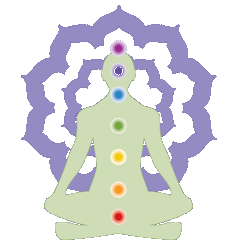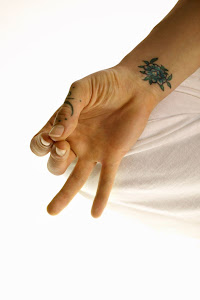As you probably know, there are many varieties of backbends available to us. Supported Bridge, Up Bow, and Camel, to name just a few. There are also poses like Natarajasana (King Dancer) which have strong backbend elements to them.
No matter which backbend you are doing, keep your butt muscles engaged!! Those of you who practice with me have heard me say this over & over again, but it's because it's so important. Engaging the glutes protects the lower back. Think of contracting the back of your body to open the front of the body to the sky; open heart, long belly, open hips. Make sure to rest in between backbends with the knees in, spine in a reversed position.
What are some potential obstacles in backbend? One is lack of flexibility in the spine. The answer for this is more practice, challenging though it may be! Work closely with an instructor if you have a very rigid (or rigid area of your) spine. Another obstacle is lack of strength, usually in the arms. This needed strength can be built up by lowering down correctly through plank during Sun Salutations. Ask your teacher! Your instructor can show you other ways to strengthen these muscles, as well as how to use a strap to stabilize the arms. Fear can also be a tremendous obstacle here, especially if you have had a less-than-positive backbend experience in the past. As always, be patient and compassionate with yourself. Keep breathing. Backbending can be both physically and emotionally intense, as the heart expands and becomes open and vulnerable. Learn to trust your body, including when to challenge yourself, when to let go, and when to back off. Never hesitate to ask for assistance if you need it!
In general, students start off with Supported Bridge Pose. From there, you will likely progress to Up Bow. Up Bow can take several modifications; once it becomes easily accessible you can begin to walk the hands toward the feet, eventually grabbing one or both ankles. (**This is very advanced!!! Please do not attempt without an instructor!!**) But you don't have to be able to hold your ankles to begin to learn Drop-Backs. These often start with "walking down the wall" into a backbend. This helps us understand how the hips need to shift forward in order to counter-balance the weight of the body as it bends backward. Walking back UP the wall is harder, and requires very strong Bandhas and stomach muscles. Once you get the feeling of having a very stable base in the legs and hips, Drop-Backs without the wall are possible. Have an instructor assist you to a lessening degree, until you are completely in control of the backward descent. Again, coming back up is more challenging and requires Bandhas, belly strength, and a little momentum somtimes :)
Remember, always practice at your own level. Everything comes in time. With that being said, here is an awesome, must-see video to demonstrate the principles I've been talking about:
http://xchange.orgfree.com/videos/view.php?id=z8wXJPUY2L0
(thanks, yogabodynaturals.com people!!)
Subscribe to:
Post Comments (Atom)





No comments:
Post a Comment